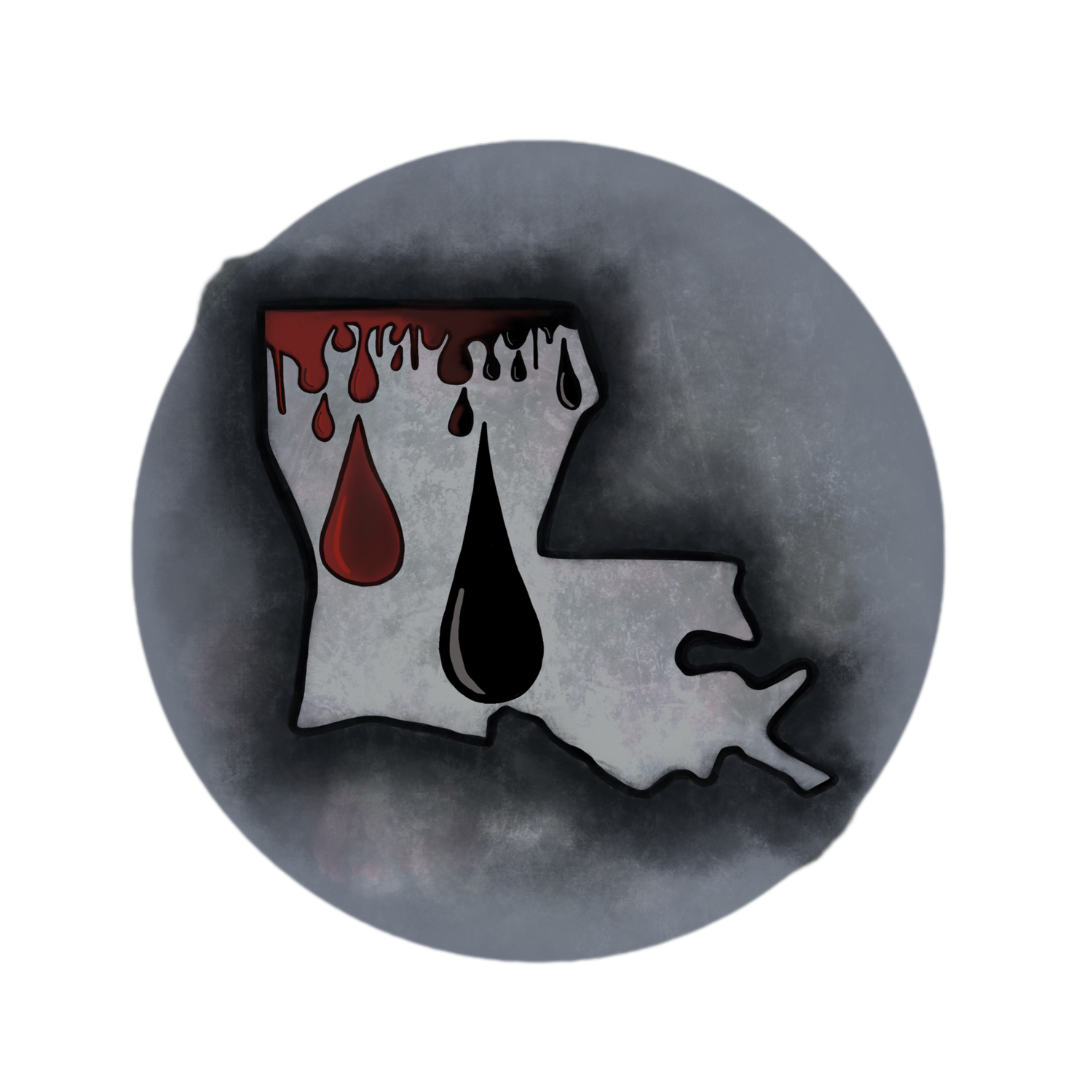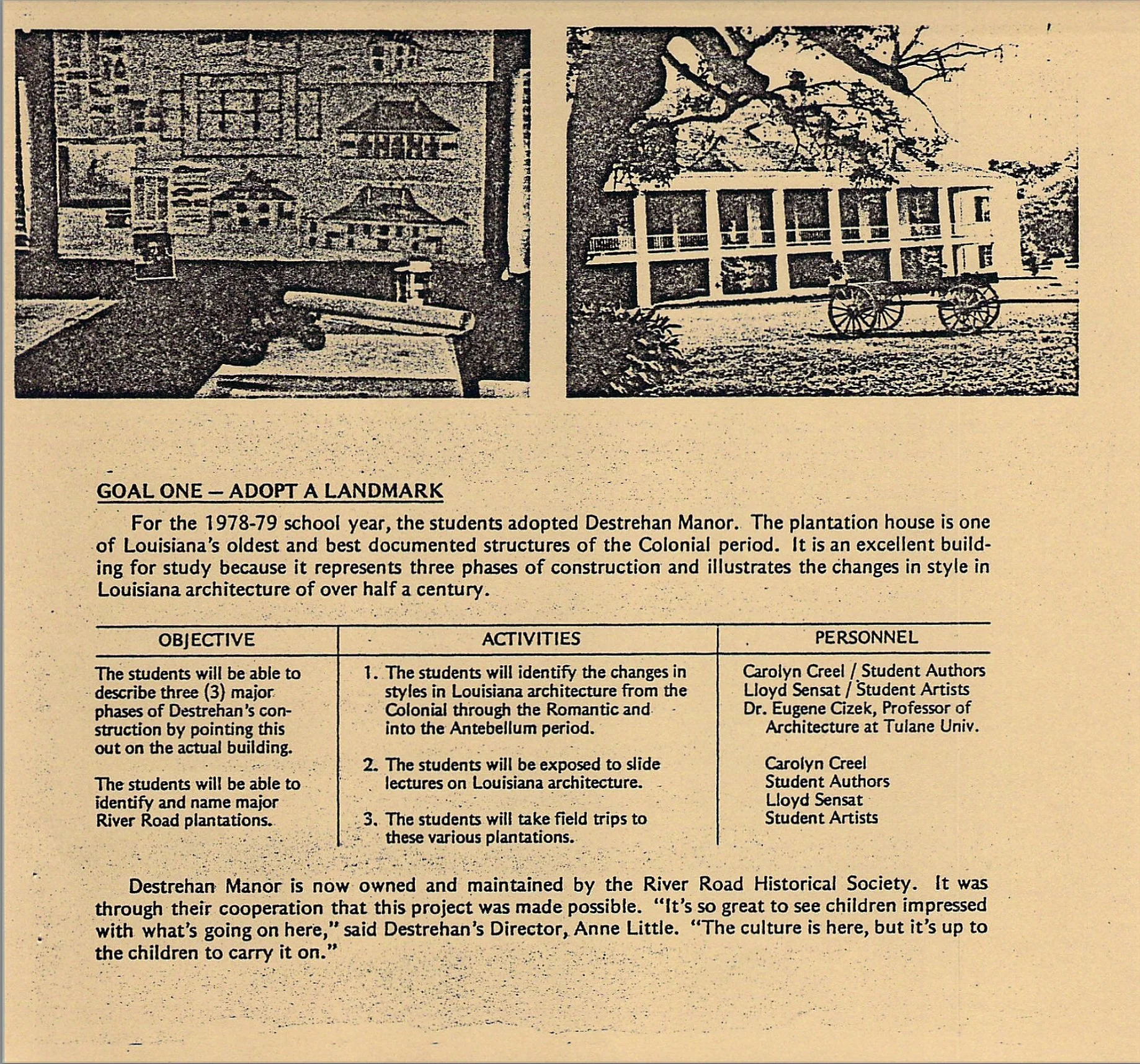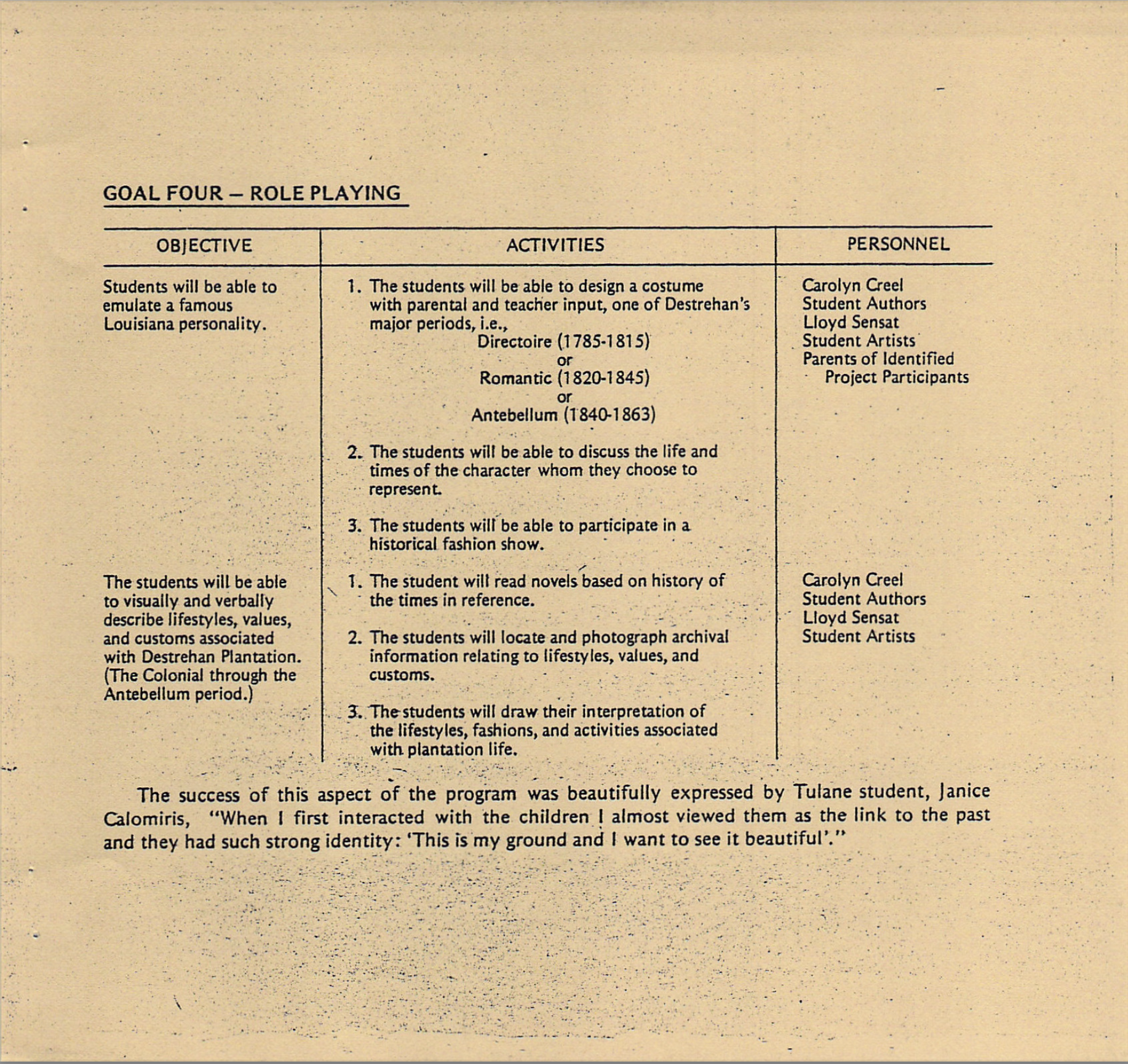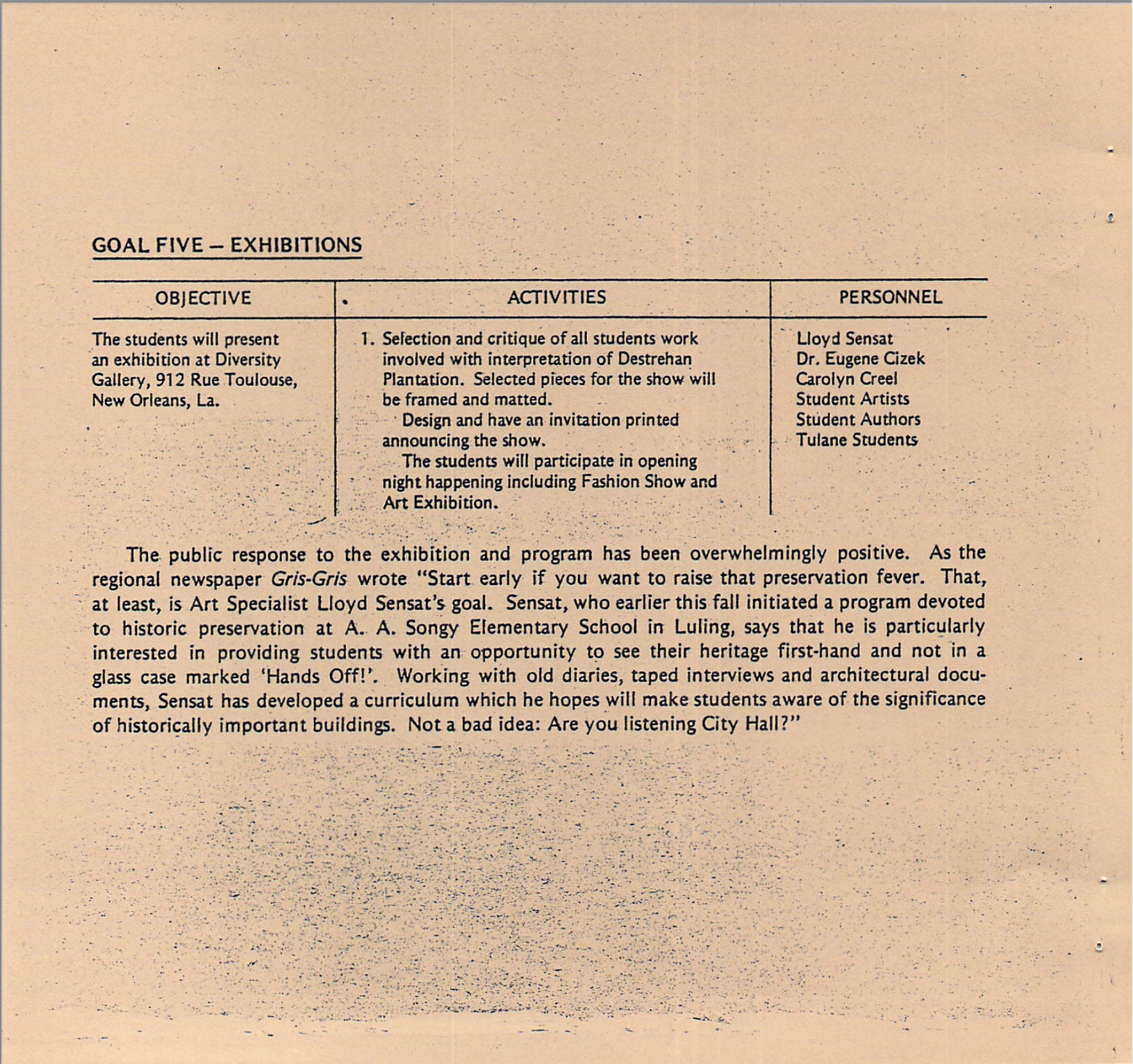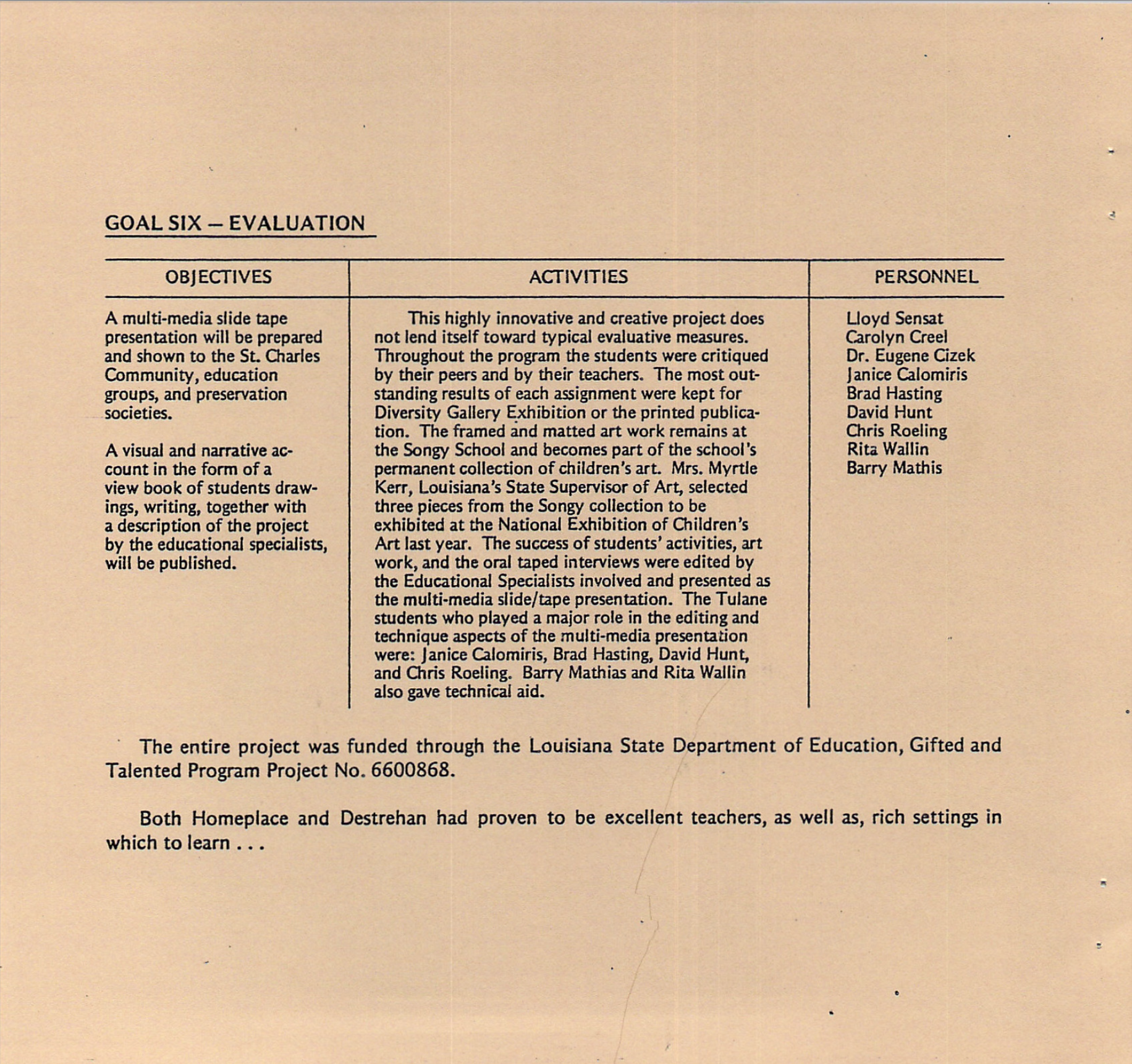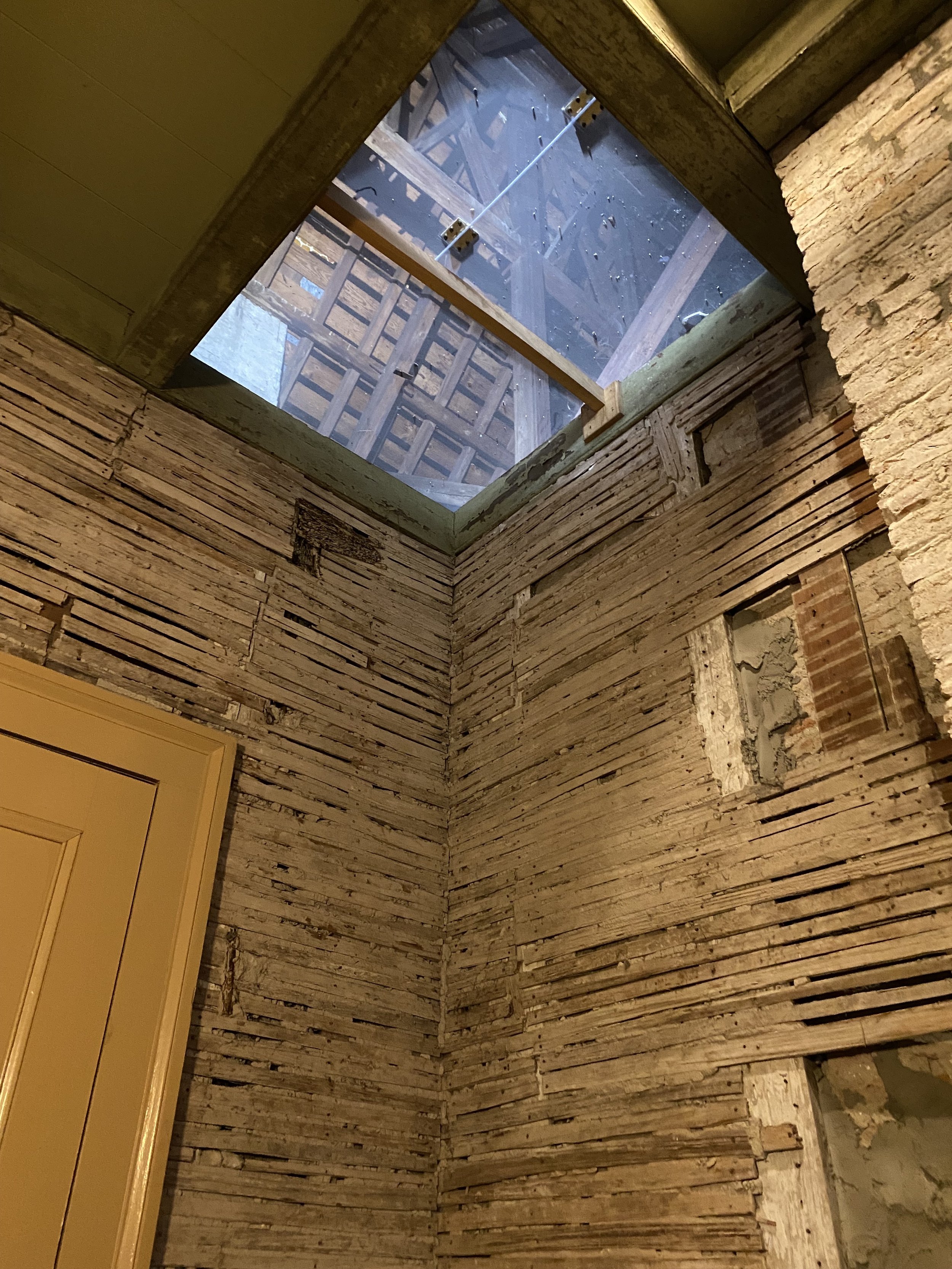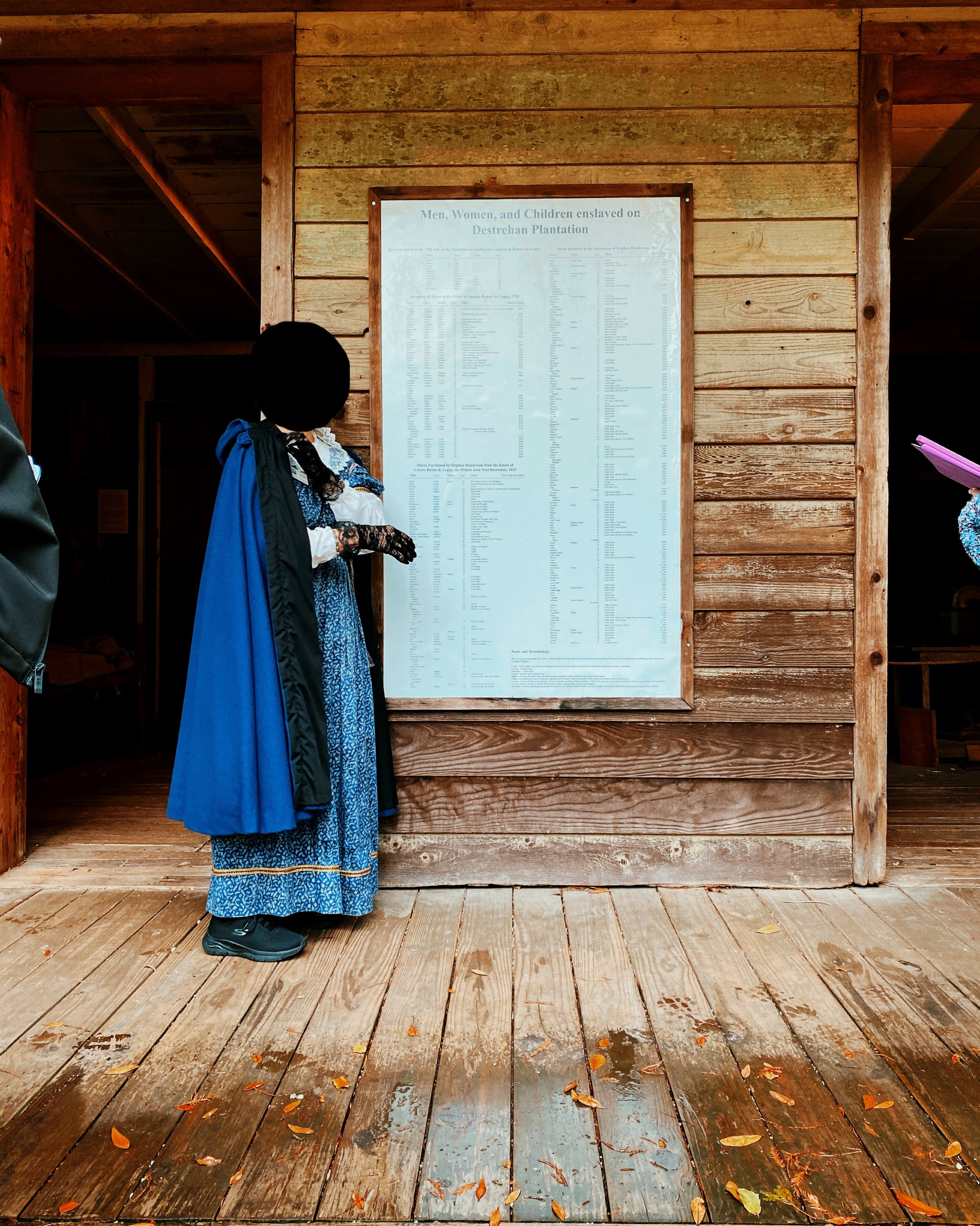
Episode 8
Part I:
The Plantation Museums on River Road

“It’s sugarcane country, but there’s a bittersweet history tied to this land.”
The River Road Historical Society
Eugene Cizek, John H. Lawrence, Richard Sexton. Destrehan: The Man, The House, The Legacy. Louisiana: River Road Historical Society, 2008. 64 Parishes
Destrehan Plantation Museum’s coffee table book provided valuable information about the restoration of the colonial mansion. Image from page 57.“National Register of Historic Places - Nomination Form.” Destrehan Plantation, St. Charles Parish, Louisiana. United States Department of the Interior, National Park Service. March 20, 1973. Read on National Parks Service website
On the application form, the Society listed its long connection to Louisianan capitalism: “The house was erected when indigo was still the principal plantation crop in Louisiana. The plantation then became an important sugar producing one in the nineteenth century and the house served as a facility of a major oil company for a number of years in the twentieth century when Louisiana began the transition from an agricultural to an industrial economy.” ProPublica Nonprofit Explorer. “River Road Historical Society.” Accessed October 14, 2021. Read nonprofit summary on ProPublica
Newspapers used in this episode:
L’Observateur, June 19, 2002. “Good Examples: Gaupp Appreciates History.” Read online
River Road Historical Society founder Ella Wayne Gaupp is interviewed by local publication L’Observateur about her contributions to local history and local nonprofits. Richmond Beacon-News, November, 11, 1972.
The first Fall Festival held at Destrehan Plantation. The St. Charles Herald. November 9, 1972. [pictured]
Images in the article:5 of the “Plantation Queen” beauty contest participants.The design of the pirate “doubloons” cast for the festival. Education Through Historic Preservation
During the 1978-79 school year, students from A.A. Songy Elementary School in the Education Through Historic Preservation program completed “Goal Four: Role Playing.”
Costumes of all kinds are depicted. From Regency-Era dresses with gloves, to Antebellum hoop skirts, top hats and canes, even a Jean Lafitte character.
But the most fascinating is the lone student of color, top center of left page. Surrounded by photos of her white classmates in glam and excess, she stands stoic, staring at the camera in her simple white dress and tignon.
Cizek and Sensat returned to Destrehan for the 7th year of their Education Through Historic Preservation Program, 1983-84.
During the 1983-84 school year, Sensat’s students from St. Charles Parish Public Schools and Cizek’s students from Tulane School of Architecture created the “chantournes” (mannequins) still found in the Museum today.
Marguerite
an enslaved woman charged with domestic duties, in a perpetually hunched stance. Our tour guide referred to Marguerite as “sturdy” because of her long life and many successful childbirths.
Charles Paquet
architect and builder of Destrehan Plantation. Paquet was a free man of color and likely constructed other Creole plantation homes in the German Coast in the late 18th century.
Paquet’s mannequin is kept in the storage room of the Plantation house - why? Wouldn’t it make more sense for him to be in the room that details his design and the craftsmanship of the enslaved men who built the house that stands over 200 years later?The 1983-84 ETHP students from Tulane University constructed a scale model of the Creole mansion, also still in use by the Museum & pictured below:
The Museum’s deconstructed interior room showcasing the construction techniques of Paquet and the builders.
Photo of our costumed tour guide at Destrehan Plantation Museum in December of 2021.
She stands on the porch of a sharecropper cabin used as the Museum’s only slavery exhibit included in the tour we received. (Face removed for privacy.)
In 1991, Eugene Cizek & Lloyd Sensat won the Louisiana Landmarks Association’s Harnett T. Kane Award for their Education Through Historic Preservation program.
“1991 Harnett T. Kane Award to Eugene D. Cizek and Lloyd L. Sensat, Jr.” Preservation Magazine 33, No. 1. (June 1991): 1-2. New Orleans Public Library, Manuscripts Collection, Education Through Historic Preservation.
Eugene D. Cizek and Lloyd Sensat Jr., “Address Given as Joint Recipients of the 1991 Harnett T. Kane Award for Preservation / Education.” The Louisiana Landmarks Society. April 7, 1991. New Orleans Public Library, Manuscripts Collection, Education Through Historic Preservation.
Harnett T. Kane was a prolific tourism and travel writer for the state of Louisiana, and particularly New Orleans. His Plantation Parade: The Grand Manner in Louisiana (1945) inspired Eugene Cizek’s life work in historic preservation and plantation museums. WorldCatFor more about the South’s “memory theaters”:
Fitzhugh Brundage, “Exhibiting Southernness in a New Century.” In Southern Past: A Clash of Race and Memory, 183-226. Cambridge: Harvard University Press, 2008. Google Books
Jennifer L. Eichstedt and Stephen Small, Representations of Slavery: Race and Ideology in Southern Plantation Museums. Washington DC: Smithsonian Books, 2002. Penguin Random House
E. Arnold Modlin Jr., “Representing Slavery at Plantation-House Museums in the U.S. South: A Dynamic Spatial Process.” University of Virginia. (March 2008): 147-173. PDF
For more about the evolution of white supremacy post-Civil Rights:
William H. Chafe, Civilities and Civil Rights: Greensboro, North Carolina, and the Black Struggle for Equality. New York & Oxford: Oxford University Press, 1980. Google Books
For more Black perspectives on the existence of plantation museums:
Erik Johnson, “Slavery, Tourism, and Memory in New Orleans’ ‘Plantation Country.’” Africa Today 65, No. 4. (Summer 2019): 101-118. Muse-JHU
Eileen Julien, professor at Indiana University Bloomington, remembers her childhood in South Louisiana. Kathe Hambrick’s quote [above] originates from Johnson’s article.Merrill Singer, “Down Cancer Alley: The Lived Experience of Health and Environmental Suffering in Louisiana’s Chemical Corridor.” Medical Anthropology Quarterly 25. No. 2. NIH
